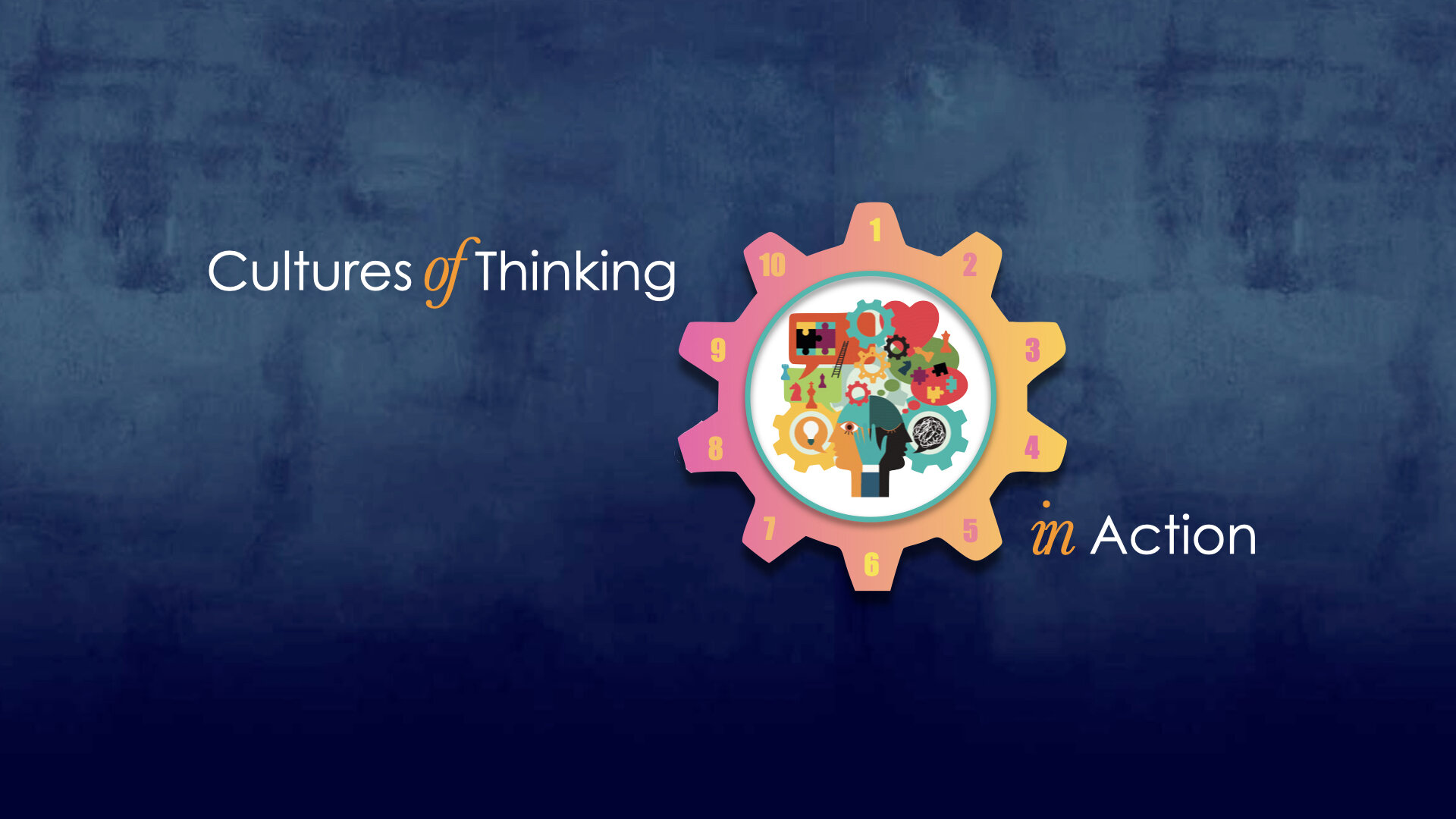
What are the mindsets that underpin a teacher’s ability to create a culture of thinking?
What are the guiding principles that form the foundation of the cultures of thinking approach?
What stance do effective creators of cultures of thinking take toward learning, thinking, and teaching?
The Worldwide Cultures of Thinking project began with two frameworks. The first was the 8 Cultural Forces, a framework that helps to illuminate the building blocks of group culture. The second was the framework, in the form of the Understanding Map, for understanding what we mean by thinking. These frameworks, and the associated tools we have developed around them, are important vehicles for teachers and schools to leverage as they embark on creating robust cultures of thinking.
Of course, tools, frameworks, and practices alone do not make a culture. A culture lives in values and beliefs. A culture sends messages to communicate these values. In schools we send messages about what learning looks like, how it happens, what it means to be a good student, and the role of teachers and students. The messages we send are largely based on the mindsets we hold. These mindsets inform how we approach the act of schooling. They represent the professional stance we take toward teaching and learning.
Our current research in the Worldwide Cultures of Thinking project has focused on identifying these mindsets/stances. They represent 10 Guiding Mindsets that propel the development of a culture of thinking. Thus, we call this current line of research, Cultures of Thinking in Action. We present these principles below along with an accompanying theory of action that ties actions to outcomes. We also present a collection of resources, tools, actions, and practices that can help teachers advance them in their schools and classrooms. Simply click on the image accompanying each Mindset to read more.
#1
For classrooms to be cultures of thinking for students, schools must be cultures of thinking for teachers.
If we support and empower the adults in the school to continually grow, innovate, question, take risks, reflect, examine, inquire and learn from and with one another, then teachers will create those same conditions for the students in their classrooms.
#3
To create a new story of learning we must change the role of the student and the teacher.
If we support students in becoming active creators, initiators, problem finders and community members while we as teachers focus on coaching, mentoring, and being community navigators; then students’ understanding, engagement, curiosity, and self-direction will increase.
#4
Students learn best when they feel known, valued, and respected by both the adults in the school & their peers.
If we focus on knowing our students, demonstrate that we value them as thinkers and learners, and develop positive relationships with them both individually and collectively; then disruptive behavior will decrease, students will be more engaged, and they will feel more connected to the school community.
#6
Learning and thinking are as much a collective enterprise as they are an individual endeavor.
If we engage students in learning from and with each other through active discussion and group exploration of content, then engagement will increase, students will become more self-directed learners, and a community of supporting learners will form.
#10
We make thinking and learning visible to demystify, inform, and illuminate these processes.
If we regularly make our students’ thinking and learning visible, then we will demonstrate the value of the learning process, gain valuable formative assessment data, and engage students as active agents in the story of their own learning.









